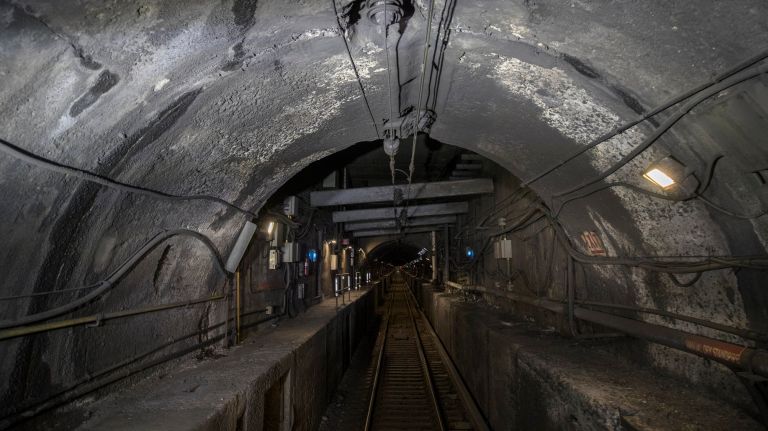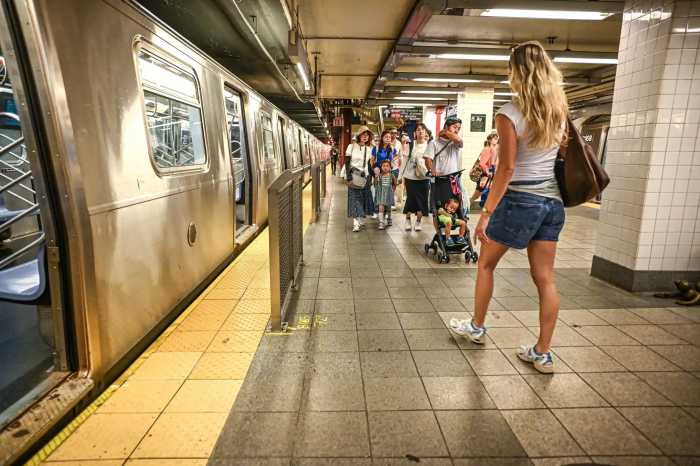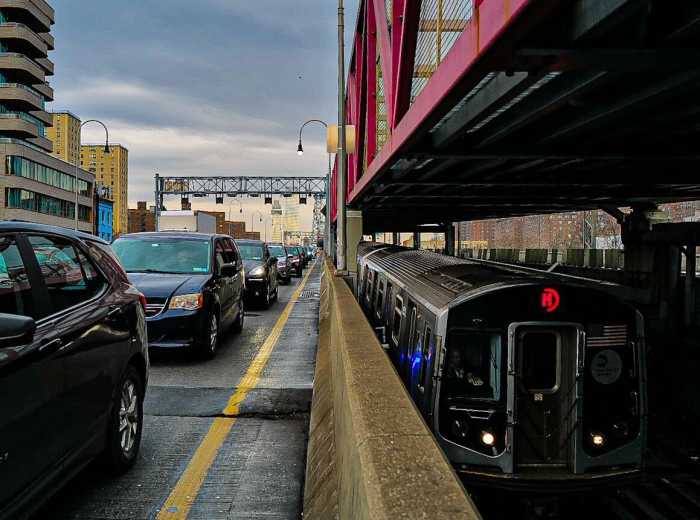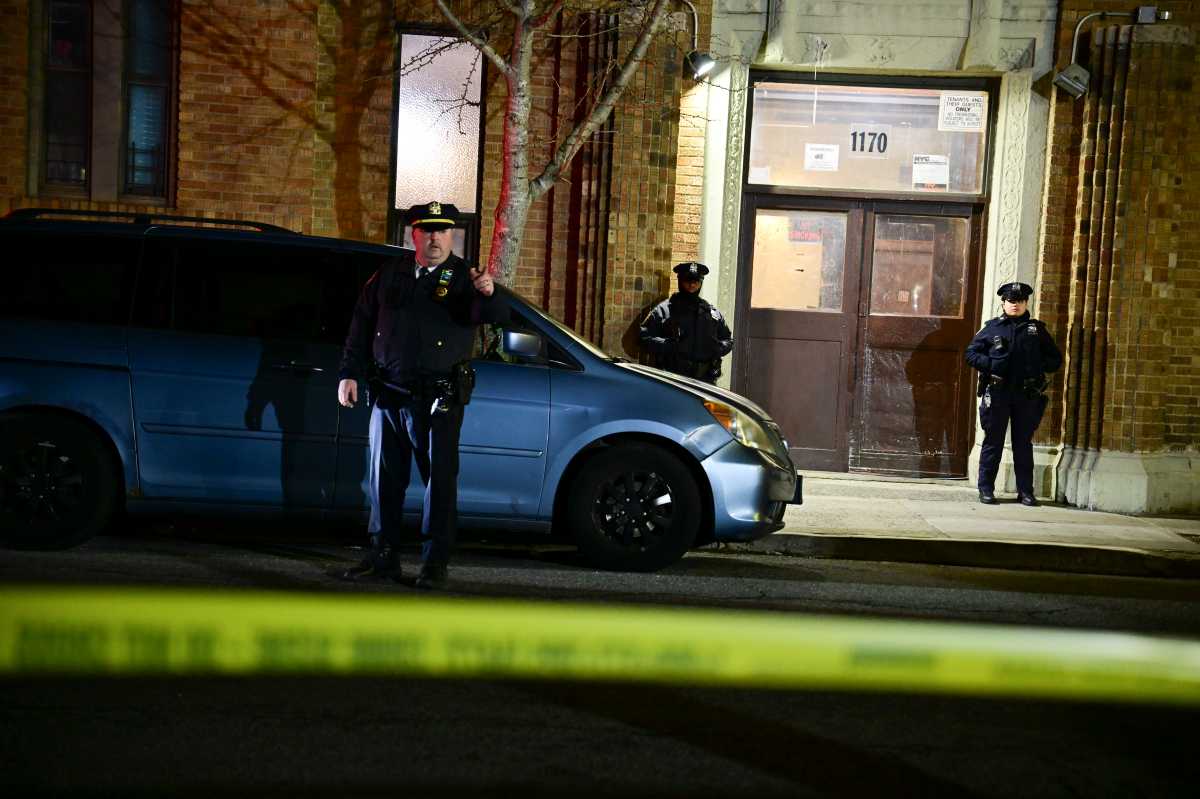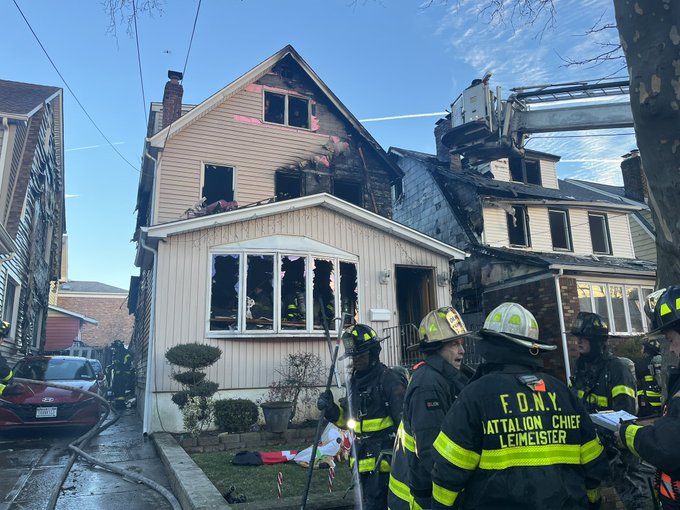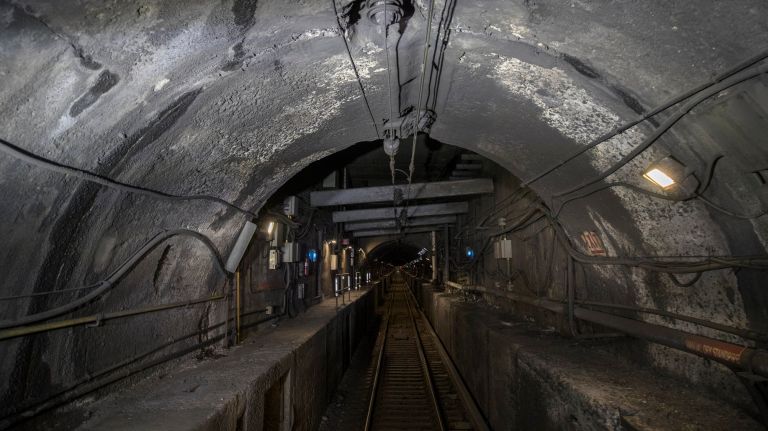
President Donald Trump continued to spurn the Hudson River’s failing commuter rail tunnels, as elected officials stared down a “doomsday scenario” for the region.
The White House’s proposed 2020 budget does not include any new funding for the stalled Gateway Program, which in part would replace the two 110-year-old, Sandy-damaged Hudson River tunnels — a vital, 2.5-mile link for hundreds of thousands of daily commuters who take the rails between New York and New Jersey.
“Those transit projects are local responsibilities, and elected officials from New York and New Jersey are the ones accountable for them,” said U.S. Department of Transportation Deputy Secretary Jeffrey Rosen on Monday, during a budget briefing call with reporters.
Gov. Andrew M. Cuomo, who has met with Trump to talk about Gateway in the past, responded by saying it was “laughabl[e]" for the federal government to assert that Gateway is solely the responsibility of the two states since Amtrak owns the tunnel.
"Inaction would be catastrophic not just for the region but for the entire national economy,” said Cuomo in a statement. “The Trump Administration must stop playing political games and holding this funding hostage. If the federal government refuses to fund this project, then the President will have to answer to the travelers and businesses across the Northeast who rely on this critical transit corridor."
As the federal government made its case, Rep. Peter King (R-Long Island) joined Josh Gottheimer, his colleague from across the aisle and river, at Penn Station. They took to the Amtrak concourse to announce new legislation Monday that would require the federal government to draft an alternative service plan should a Gateway tunnel be forced out of service for repairs.
“Every day we wait is a day closer to a terrible disaster — economic disaster, physical disaster and potentially a national security disaster,” King said.
The new legislation came the same day the Trump administration unveiled its proposed budget. King and Gottheimer harshly criticized the White House for “slow-walking” the approval process for the Gateway Program, a roughly $30 billion endeavor to rehabilitate aging rail infrastructure on Amtrak’s Northeast Corridor.
The program includes approximately $13 billion to replace the two 110-year-old and Sandy-damaged Hudson River tunnels that each day link 220,000 daily riders on roughly 450 New Jersey Transit and Amtrak trains between New York and New Jersey.
Elected officials have criticized the White House for using what they believe to be the most important infrastructure project in the country as a political bargaining chip. They pointed to the federal government’s almost yearlong delay of the approval of an Environmental Impact Statement, which could jumpstart the program, and a downgrading of the project’s rating last year to “medium-to-low,” the second-lowest rung on a five-point scale.
“If they dropped the category of importance for this project [to] moderate-to-low, then I’m sure they’re all geniuses down there,” King continued, sarcastically. “They must have a real reason for doing it. So I’m anxiously looking forward to the report they give us in the next 60 days to tell us what the alternative plan is to drop it down.”
The Trump administration also walked away from an agreement with the Obama administration to split the project funding, with half of the funding coming from the two states and the other half coming from the federal government.
Rosen at the DOT added that there “is no reason” for Gateway to “jump the line and receive massive federal subsidies for projects that presently are ineligible and which lack realistic plans and commitments.”
Amtrak and New Jersey Transit have warned that the tunnels don’t have much time left in their current condition. During a tour this fall, officials pointed out crumbling ceilings — where concrete had fallen off in several locations just above the tunnel’s overhead catenary line that powers the trains. In one area, large panels of concrete were missing, exposing corroded steel reinforcement bars.
Should one tunnel have to close for repairs, the number of trains crossing the river would drop by 75 percent — from 24 trains per hour to six, according to Amtrak, which owns the tunnel. Experts and advocates believe this would have a devastating impact on the everyday lives of commuters as well as the economies of the region and the nation.
“When the tunnel sneezes, we all catch colds,” as Jerry Zaro, the chairman of the Gateway Development Corp., put it.
Realistically, there is not an alternative service plan that could possibly accommodate the Hudson River tunnel commuters should a tunnel fail, Zaro said. The roads are utterly congested already and the Port Authority Bus Terminal is already overcapacity.
An emergency shutdown of the tunnel would cost the national economy $16 billion over four years and would force 38,000 daily New Jersey Transit riders to find other, more time-consuming ways to get to work, according to a report released in recent weeks from the Regional Plan Association. Thousands would have to move or change jobs, the report estimated.
More commuters fleeing to cars would have a negative impact on the environment and increase the chances of collisions, according to the report, and homeowners would see their property values dip by a collective $22 billion.
Elected officials said the tunnels prop up 20 percent of the nation’s gross domestic product. And last March, Congress secured $650 million for Amtrak’s Northeast Corridor as part of an approved $1.3 trillion spending bill.
Chris Jones, the senior vice president chief planner at RPA, said it’s “becoming increasingly likely” that a closure of a tunnel will happen, given the federal government’s delays. And if the economy turns, that would cripple the region.
“If a [one-tunnel shutdown] happened at a time when the economy was weakening,” he said, “it could be the trigger that could push the region into a recession.”
With Laura Figueroa Hernandez



